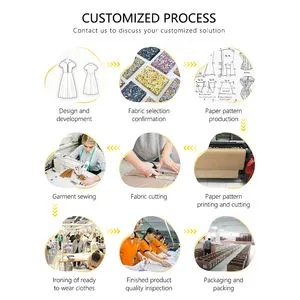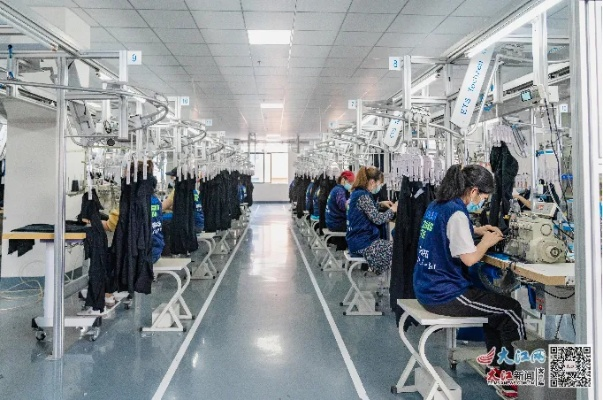The EUs Requirements for Textile Products A Comprehensive Guide
This comprehensive guide provides a thorough analysis of the EU's stringent requirements for textile products. It covers various aspects such as quality, safety, environmental protection, and labor conditions. The guide emphasizes the importance of meeting these requirements to ensure compliance with EU regulations and avoid potential legal consequences. It also offers practical tips and strategies for businesses looking to improve their product quality and meet these standards. Overall, this guide is essential for anyone involved in textile production or importing textile products into the EU market.
Introduction to the EU's Textile Standards The European Union (EU) is one of the world's largest economies, with a strong emphasis on environmental protection and consumer safety. When it comes to textile products, the EU has set strict standards that aim to ensure high quality, durability, and safety for consumers. These requirements are not only aimed at protecting the environment but also ensuring that textile products meet certain standards in terms of their composition, production processes, and end-use properties. In this guide, we will explore some of the key requirements and how they apply to various textile products.
-
Restrictions on Chemicals and Substances One of the most significant requirements in the EU's textile regulations is the restriction on the use of harmful chemicals and substances. This includes substances such as formaldehyde, phthalates, and lead, which can be harmful to human health and the environment. For example, the EU's REACH regulation requires all manufacturers to register and monitor the use of these chemicals in their products. Additionally, there are specific limits on the amount of each chemical that can be used in a textile product.
-
Sustainability and Eco-Friendliness Another important requirement in the EU's textile regulations is the promotion of sustainability and eco-friendliness. This includes reducing waste, using renewable materials, and minimizing the use of water and energy during the production process. For instance, the EU's REACH regulation requires manufacturers to reduce their carbon footprint by using sustainable raw materials and energy-efficient production methods.

-
Material Composition The EU's textile regulations also require that textile products must be made from safe and non-toxic materials. This includes prohibiting the use of synthetic fibers that may contain harmful chemicals or release harmful substances into the environment. Additionally, the regulations specify that textile products must be free from hazardous substances such as heavy metals, pesticides, and flame retardants.
-
End-Use Properties Finally, the EU's textile regulations also require that textile products must meet certain end-use properties. This includes ensuring that textile products are durable, resistant to wear and tear, and safe for human use. For example, the EU's REACH regulation requires that textile products must have a minimum level of resistance to abrasion and tearing.
Case Study: Lead Poisoning in Textile Products In 2015, a case study was published in the journal Environmental Science & Technology highlighting the issue of lead poisoning in textile products. The report revealed that many children's toys were made from lead-containing textiles, leading to serious health problems such as learning difficulties, behavioral issues, and even death. The report highlighted the importance of implementing stricter regulations on textile products to prevent lead poisoning in children.
Conclusion In conclusion, the EU's textile regulations play an essential role in ensuring that textile products meet high standards in terms of their composition, production processes, and end-use properties. By restricting the use of harmful chemicals and substances, promoting sustainability and eco-friendliness, and requiring that textile products meet certain end-use properties, the EU aims to protect human health and the environment. It is important for manufacturers to comply with these regulations to avoid legal penalties and maintain their reputation in the market.
随着全球贸易的不断发展,欧盟纺织品贸易在全球纺织品市场中占据重要地位,为了确保纺织品的质量和安全,欧盟制定了一系列严格的纺织品要求,本文将围绕欧盟纺织品要求展开讨论,并通过案例分析进一步说明。
欧盟纺织品要求概述
纺织品质量标准

欧盟对纺织品质量要求严格,包括纤维含量、颜色、尺寸、耐久性等方面,欧盟还对纺织品的安全性能、环保性能等方面提出了具体要求。
纺织品检验流程
欧盟纺织品检验流程包括原料检验、过程检验和成品检验三个阶段,原料检验主要关注纤维质量、化学成分等;过程检验关注生产过程中的质量控制;成品检验则是对最终产品的质量进行全面检查。
案例分析
以某知名品牌纺织品为例,说明欧盟纺织品要求的具体应用,该品牌在欧盟市场上的表现一直较好,其纺织品质量稳定,符合欧盟纺织品要求,具体案例如下:
-
原料检验:该品牌采用高质量的天然纤维作为原料,纤维含量符合欧盟要求,该品牌对原料进行严格的质量控制,确保原料的纯净度和稳定性。
-
生产过程控制:该品牌在生产过程中严格控制工艺流程,确保每一步生产环节都符合欧盟要求,该品牌采用先进的生产设备和技术,提高生产效率和质量。
-
成品检验:该品牌对成品进行全面检查,包括尺寸、颜色、耐久性等方面,经过严格的质量检测,该品牌的产品符合欧盟纺织品要求,且在市场上表现良好。

欧盟纺织品要求的补充说明
为了更好地适应全球纺织品贸易的新趋势,欧盟对纺织品要求进行了补充说明,以下是补充说明的部分内容:
-
环保性能要求:欧盟对纺织品环保性能提出了更高的要求,包括减少化学残留、降低碳排放等,该品牌在生产过程中注重环保,采用环保材料和技术,减少对环境的污染。
-
安全性能要求:欧盟对纺织品安全性能提出了更高的要求,包括无毒、无味、无过敏等,该品牌在产品设计中注重安全性,采用安全材料和技术,确保产品的使用安全。
欧盟纺织品要求是保障纺织品质量的重要手段,也是促进纺织品贸易的重要保障,为了适应全球纺织品贸易的新趋势,欧盟不断加强纺织品要求的补充和完善,提高纺织品的质量和安全性能,企业也应该注重产品质量和安全性能的提高,加强生产过程中的质量控制和检测,确保产品的质量和安全性能符合欧盟要求。
Articles related to the knowledge points of this article:
Exploring the Future of Textiles:A Comprehensive Analysis of Haian Textiles
The Similarity and Differences Between Textiles and Yarn
The Global Fabrics of Innovation:An Interview with Guo Fan Textiles



